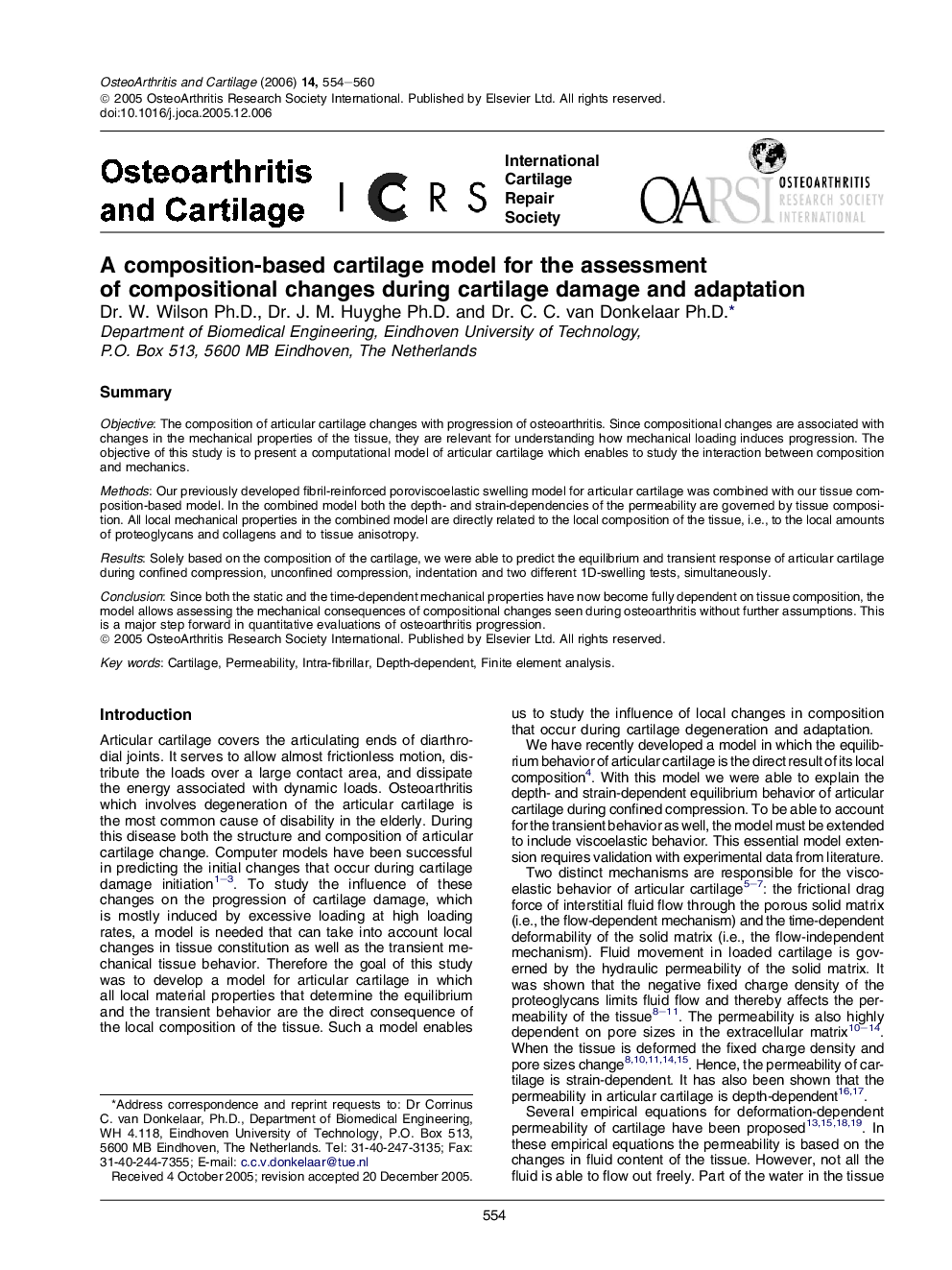| Article ID | Journal | Published Year | Pages | File Type |
|---|---|---|---|---|
| 3382170 | Osteoarthritis and Cartilage | 2006 | 7 Pages |
SummaryObjectiveThe composition of articular cartilage changes with progression of osteoarthritis. Since compositional changes are associated with changes in the mechanical properties of the tissue, they are relevant for understanding how mechanical loading induces progression. The objective of this study is to present a computational model of articular cartilage which enables to study the interaction between composition and mechanics.MethodsOur previously developed fibril-reinforced poroviscoelastic swelling model for articular cartilage was combined with our tissue composition-based model. In the combined model both the depth- and strain-dependencies of the permeability are governed by tissue composition. All local mechanical properties in the combined model are directly related to the local composition of the tissue, i.e., to the local amounts of proteoglycans and collagens and to tissue anisotropy.ResultsSolely based on the composition of the cartilage, we were able to predict the equilibrium and transient response of articular cartilage during confined compression, unconfined compression, indentation and two different 1D-swelling tests, simultaneously.ConclusionSince both the static and the time-dependent mechanical properties have now become fully dependent on tissue composition, the model allows assessing the mechanical consequences of compositional changes seen during osteoarthritis without further assumptions. This is a major step forward in quantitative evaluations of osteoarthritis progression.
